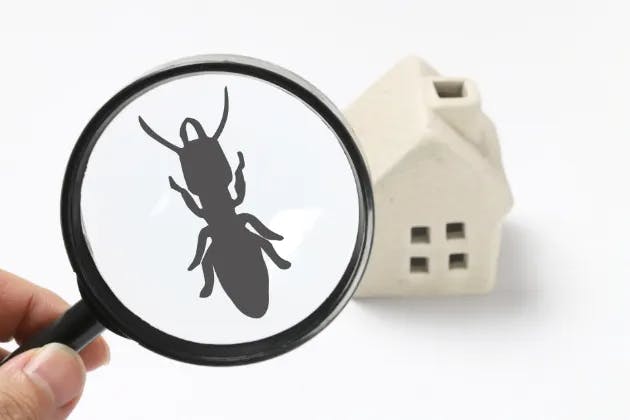The relationship between mould and pests is far more complex and symbiotic than most people realise. High humidity, stagnant moisture, and decaying organic materials create perfect breeding grounds that simultaneously nurture mould growth and attract a diverse range of insect species. From microscopic mould mites to robust cockroaches, these opportunistic creatures are drawn to the same environmental conditions that allow fungal colonies to flourish.

Conditions That Foster Mould Growth and Bug Attraction
Mould thrives in environments with high humidity levels, typically above 60%, and temperatures between 20-30°C. These conditions are often found in poorly ventilated areas such as bathrooms, basements, and attics. Interestingly, these same environments are highly attractive to various insect species.
High humidity creates a perfect breeding ground for mould, providing the moisture necessary for spore germination and growth. Simultaneously, many insects are drawn to these damp conditions. Camel crickets, for instance, seek out moist environments to prevent dehydration. Centipedes and cockroaches are also attracted to damp, dark spaces where they can find shelter and sustenance.
How Mould Attracts Bugs
Mould serves as a direct food source for several insect species. Mould mites, booklice, and foreign grain beetles feed directly on mould spores and hyphae. This nutritional relationship is a primary driver of bug attraction to mouldy areas.
Moreover, mould produces microbial volatile organic compounds (MVOCs) as a byproduct of its metabolic processes. These MVOCs emit distinct odours that act as attractants for many insects. The scent signals the presence of potential food sources and suitable habitats, drawing pests to infested areas.
Types of Bugs Attracted to Mould
- Mould mites: These microscopic arachnids feed directly on mould and thrive in damp environments.
- Booklice: Despite their name, these insects prefer mouldy environments and feed on fungi and mould spores.
- Cockroaches: While not feeding directly on mould, cockroaches are attracted to the damp conditions that foster mould growth.
- Termites: These wood-destroying insects are drawn to moist wood, which is often softened by mould growth, making it easier for them to consume.
- Silverfish: These primitive insects feed on mould and prefer damp, dark environments.
- Springtails: Often found in moist soil, springtails feed on mould and algae.
- Woodlice: These crustaceans require high humidity and often inhabit areas prone to mould growth.
- Centipedes: While not feeding on mould, centipedes are attracted to the damp conditions and prey on other mould-loving insects.
- Mould beetles: Various species of beetles feed on mould and are commonly found in infested areas.
The Cycle of Mould and Bug Infestations
The relationship between mould and bugs creates a self-perpetuating cycle. As insects are attracted to mouldy areas, they bring with them organic material in the form of waste and dead bodies. This additional organic matter serves as a food source for mould, promoting further growth.
As the mould colony expands, it attracts more insects, which in turn provide more organic material. This cycle continues until both the mould growth and humidity levels are effectively addressed.
Health and Structural Risks
The combination of mould and bug infestations poses significant health and structural risks. Mould spores can trigger allergic reactions and exacerbate respiratory conditions such as asthma. Some moulds produce mycotoxins, which can cause more severe health issues upon prolonged exposure.
Insects like mould mites can shed microscopic hairs that become airborne, causing allergic reactions in sensitive individuals. Cockroaches are known to carry pathogens that can cause various diseases.
Structurally, mould can weaken building materials by breaking down cellulose and other organic compounds. Termites, attracted by the moist, mould-softened wood, can cause extensive structural damage if left unchecked. Cockroaches may chew through various materials, including electrical wiring, potentially creating fire hazards.
How to Address Mould and Bug Infestations
Addressing mould and bug infestations requires a comprehensive approach:
- Identify and fix moisture sources: Repair leaky roofs, pipes, and improve ventilation in bathrooms and kitchens.
- Professional mould inspection: Engage certified mould inspectors to assess the extent of the infestation.
- Mould remediation: For extensive mould growth, professional remediation is crucial to ensure thorough removal and prevent spore spread.
- Dehumidification: Use dehumidifiers to maintain indoor humidity levels below 60%.
- Improve ventilation: Install exhaust fans in bathrooms and kitchens, and ensure proper attic ventilation.
- Pest control: Engage professional pest control services to address bug infestations effectively.
- Seal entry points: Identify and seal potential insect entry points around the property.
Prevention Tips
Preventing mould and bug infestations is far more cost-effective than addressing established problems:
- Regular inspections: Conduct monthly checks for signs of moisture, mould, or insect activity.
- Maintain optimal humidity: Use hygrometers to monitor indoor humidity levels and employ dehumidifiers as needed.
- Proper ventilation: Ensure adequate air circulation throughout the property, particularly in prone areas like bathrooms and basements.
- Prompt repairs: Address any water damage or leaks immediately to prevent mould growth.
- Use moisture-absorbing products: Employ silica gel packets or calcium chloride products in areas prone to dampness.
- Regular cleaning: Maintain a clean environment to discourage pest infestations and promptly remove any visible mould growth.
By addressing both mould and bug infestations comprehensively and implementing preventive measures, homeowners can maintain a healthier, safer living environment and protect their property from potential damage.
FAQs
Contact our pest control experts in Hampshire
For the fastest response, call Pegasus Pest Solutions today at 07501702101 or 02393092101.
We are available throughout Fareham, Portsmouth, Gosport, Petersfield and the surrounding areas.


